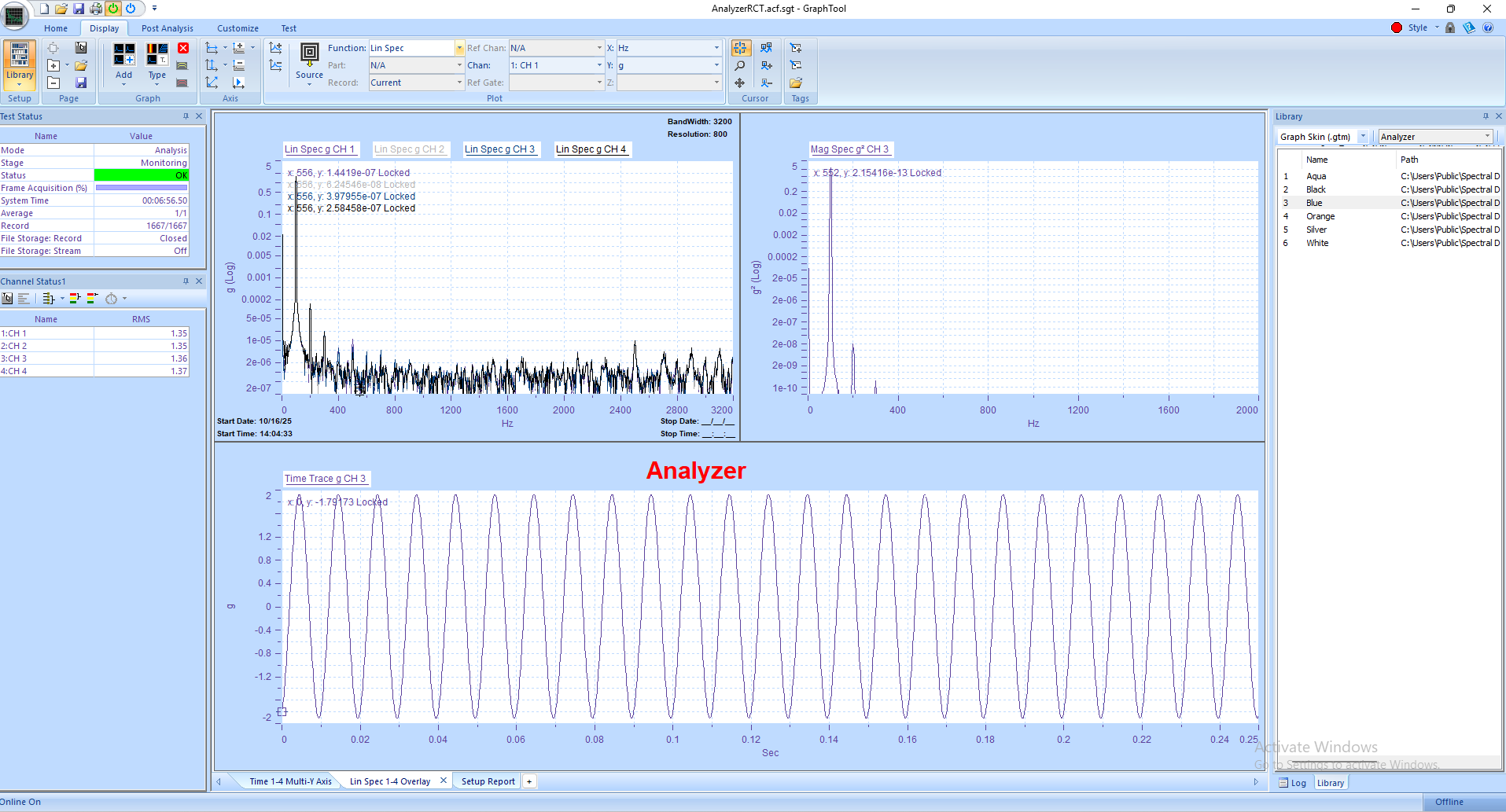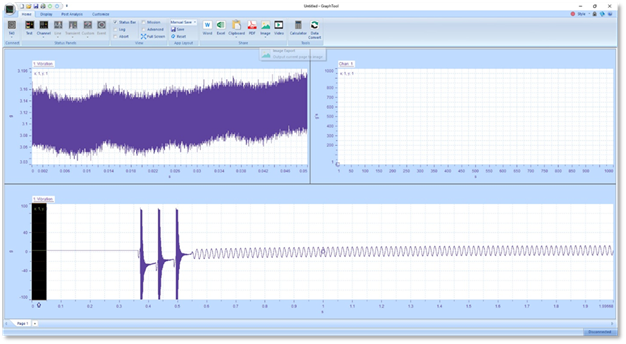Analyzer

Panther Analyzer extends the power of Spectral Dynamics' next-generation Panther platform with...
Multiple Acquisition Streams, also known as "Split Sampling," allow you to acquire data at different sample rates for different input channels within the Panther system. This is particularly useful in scenarios where you need to monitor high-frequency phenomena on some channels while simultaneously capturing lower-frequency data on others, all within the same test.

Here are a few examples of when you might use Multiple Acquisition Streams:
• Sine Testing with High-Frequency Harmonics: In a sine test, you might be interested in the primary test frequency, but also want to monitor for high-frequency harmonics or noise that could indicate a developing issue. You could set the main channels to acquire at a standard rate for the sine wave, while a separate acquisition stream captures data at a much higher rate to accurately capture these potential high-frequency anomalies.
• Random Testing with Transient Events: During a random vibration test, you might want to analyze the overall random profile, but also be able to capture and analyze any sudden, short-duration transient events that might occur. Multiple Acquisition Streams would allow you to record the main random data at a suitable rate, while a second stream captures these transients at a higher sampling rate for detailed post-event analysis.
• Multi-channel Analysis with Varying Requirements: If you have a system with many input channels, each with different dynamic characteristics or measurement requirements, Multiple Acquisition Streams can help optimize data acquisition. For instance, you might have accelerometers on a structure that require a high sampling rate to capture all dynamic modes, while other sensors like temperature or strain gauges only need a lower sampling rate. Essentially, this feature gives you flexibility in how you acquire data, allowing for more targeted and efficient analysis across different types of measurements within a single test.